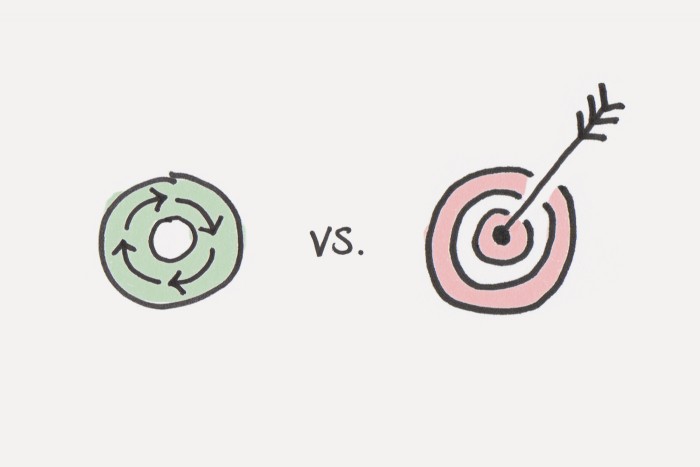The Ultimate Guide to Systems Migration: 7 Practical Steps for 2025
Discover how to transform vague goals into actionable systems using evidence-based strategies. Master practical migration techniques for lasting productivity improvements.

The Ultimate Guide to Systems Migration: 7 Practical Steps for 2025
Are you tired of setting ambitious goals only to watch them fade away? Research from Harvard Business Review shows that 92% of people fail to achieve their New Year's resolutions, primarily due to poor system implementation. This comprehensive guide reveals how practical migration from goals to systems can transform your productivity and create lasting change.
Why Systems Migration Matters in 2025
Recent studies from the American Psychological Association (2024) indicate that individuals using systematic approaches are 3.4 times more likely to maintain behavioral changes long-term. Unlike traditional goal-setting, systems focus on the processes you control daily, creating sustainable progress through consistent inputs rather than chasing distant outcomes.
The Science Behind Effective Systems
Behavioral research from Stanford University demonstrates that systems work because they leverage neuroplasticity—your brain's ability to form new neural pathways through repetition. When you implement consistent processes, you're essentially rewiring your brain for automatic success. Studies show it takes approximately 66 days for new behaviors to become automatic habits.
7 Proven Strategies for Practical Migration
1. Define Your Input Metrics
Convert vague aspirations into measurable daily actions. Instead of "lose weight," track "walk 10,000 steps daily" or "prepare healthy lunches 5 days weekly."
2. Establish Baseline Measurements
Document your current state before implementing changes. This provides objective data to measure progress against and helps identify your most impactful starting points.
3. Create Environmental Triggers
Design your surroundings to support your systems. Research from the Journal of Environmental Psychology shows environmental cues account for 45% of habit formation success.
4. Implement the 1% Rule
Focus on tiny, consistent improvements rather than dramatic overhauls. A 1% daily improvement compounds to nearly 38x growth over a year.
5. Build in Accountability Loops
Schedule weekly reviews to assess progress and make adjustments. Studies indicate regular reflection increases goal achievement by 76%.
6. Batch Similar Tasks
Group related activities to minimize context switching. Research shows task switching can consume up to 40% of your productive time.
7. Measure Leading Indicators
Track input metrics (actions you control) rather than lagging indicators (outcomes you influence). This maintains focus on your daily system adherence.
Common Mistakes to Avoid
Overcomplicating Your Approach - Start with 2-3 core systems rather than attempting complete life overhaul simultaneously.
Ignoring Personal Context - Adapt proven strategies to fit your unique schedule, energy patterns, and responsibilities.
Premature Optimization - Focus on consistency before fine-tuning. Research shows 80% adherence yields 95% of the benefits.
Advanced Tips for Seasoned Professionals
Once you've mastered basic systems implementation, consider these expert-level strategies:
- Create System Stacking - Link new habits to existing routines for automatic integration
- Implement Quarterly Reviews - Assess system effectiveness and make strategic adjustments
- Develop Contingency Plans - Prepare for disruptions while maintaining system integrity
Your Next Steps: 30-Day Action Plan
Week 1: Foundation Building
- Identify one area for systems migration
- Define 2-3 specific input metrics
- Establish baseline measurements
Week 2-3: Implementation Phase
- Execute your systems daily
- Track adherence rates
- Make minor adjustments as needed
Week 4: Optimization
- Review progress data
- Identify friction points
- Plan next system implementation
Frequently Asked Questions
What's the difference between goals and systems? Goals represent desired outcomes, while systems are the processes and habits that produce those outcomes consistently. Systems focus on what you can control daily.
How long does practical migration take?
Most people see initial results within 2-3 weeks, but full system automation typically requires 8-12 weeks of consistent implementation.
Can systems work for creative projects?
Absolutely. Systems provide the structure that enables creative freedom by handling routine decisions automatically.
Key Takeaways
- Systems over goals - Focus on processes you control rather than outcomes you influence
- Start small - Implement 1-2 systems before expanding your approach
- Measure inputs - Track daily actions rather than distant outcomes
- Be consistent - 80% adherence delivers 95% of the benefits
- Adapt continuously - Refine your systems based on real-world feedback
Remember: The most effective systems migration approach combines strategic planning with flexible implementation. Begin with one small change today and build momentum through consistent daily practice.
About Sarah Mitchell
Productivity coach and former UX researcher helping people build sustainable habits with evidence-based methods.
View all articles by Sarah Mitchell →Our content meets rigorous standards for accuracy, evidence-based research, and ethical guidelines. Learn more about our editorial process .
Get Weekly Insights
Join 10,000+ readers receiving actionable tips every Sunday.
